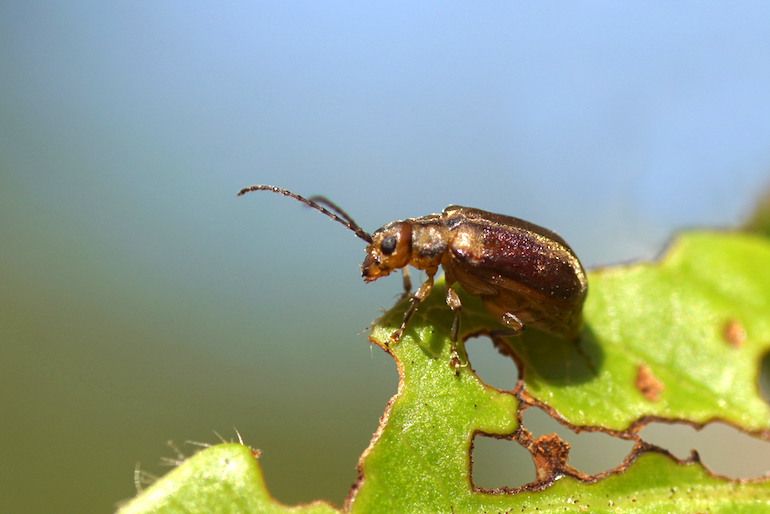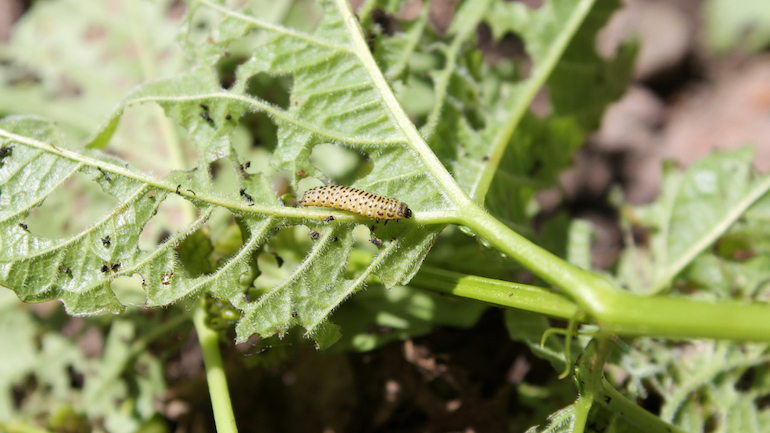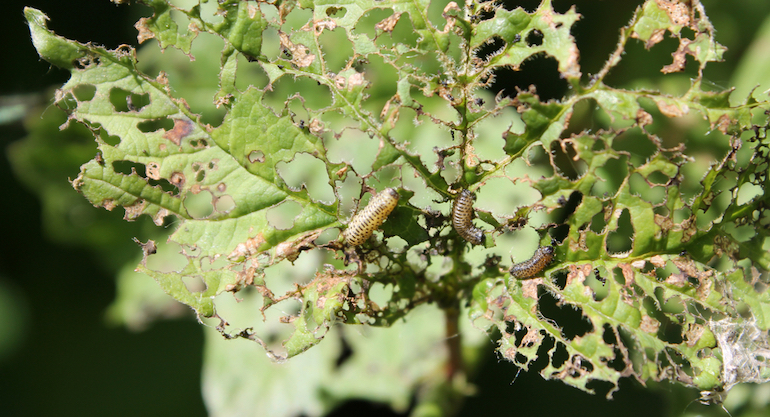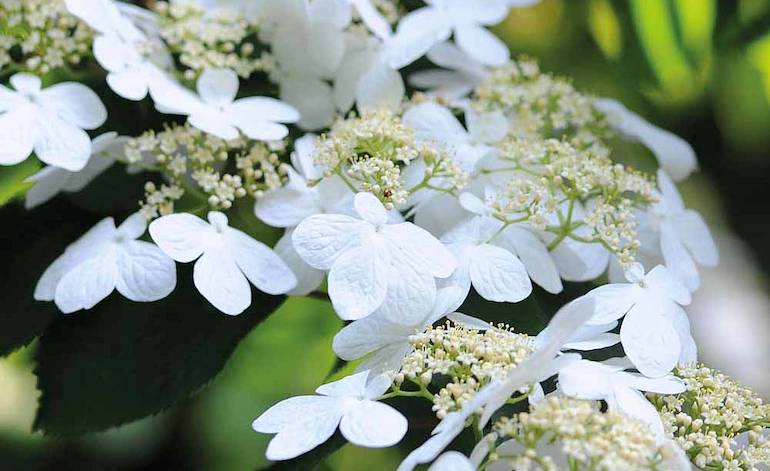Garden pests - Viburnum beetles

Check your viburnum for signs of viburnum beetle damage
Image: Thijs de Graaf/Shutterstock
What are viburnum beetles?
Viburnum beetles are a species of leaf beetle that feast on shrubs from the viburnum family. The larvae (April to June) can be up to 8mm long, while the adult beetles (late July to September) are greyish brown in colour and around 4.5-6mm long.
The eggs hatch in the spring (around April or May) and the creamy yellow-coloured larvae, which have black markings, feed on the leaves for about a month before dropping to the soil.
Fully fed, they pupate in the soil, and when the adult beetles emerge in the summer, they return to the plant to continue feeding on the leaves and lay more eggs at the shoot tips. The eggs overwinter on the plant in the bark of the stems and then the cycle begins again in the spring.
How do I recognise viburnum beetle damage?

Viburnum beetle larvae can grow up to 8mm in length
Image: Kazakov Maksim/Shutterstock
Viburnum beetles are visible on infested plants in both of their growth stages. The damage starts as small holes in the leaves, and as they continue to feed, the lamina, or flesh of the leaf gets stripped away, leaving just the veins.
Why have the new leaves on my Viburnum Opulus plants turned into lace?

Viburnum beetles and their larvae eat away at the leaves
Image: Kazakov Maksim/Shutterstock
Leaves that are being eaten by viburnum beetles will have holes in them, while the large stem remains in tact. Ultimately, the leaves take on a lace-like appearance or are stripped away altogether.
Sometimes a viburnum beetle infestation can also be identified by a foul smell on the plant, which is thought to be caused by viburnum beetle larvae excrement.
What plants do viburnum beetles eat?
These beetles feed exclusively on plants in the viburnum family, such as Viburnum tinus, V. opulus, V. lantana and others.
How can I control viburnum beetles?

The hardy Kilimanjaro viburnum is more resistant to beetle infestation
Image: Viburnum plicatum f. tomentosum 'Kilimanjaro' from Thompson & Morgan
Here’s how to control a viburnum beetle infestation:
- Grow resistant species - viburnum beetles can do significant damage to plants in this genus, but you can cut off their food supply by growing less susceptible species in your garden, such as V. carlesii, V. plicatum, and the fragrant V. x juddii.
- Inspect plants for larvae - although beetles eat viburnum plants in both their larval and adult stages, the most damage is done by the larvae. Remove any larvae you see and destroy them. Check viburnums regularly for signs of feeding in the spring, as this is when the overwintered eggs are hatching.
- Prune infected leaves and twigs - a viburnum beetle attack can leave the plant looking lacey and denuded, but these plants are generally hardy and can often withstand it. Remove any infested foliage, including whole twigs and branches if necessary, to eliminate the threat and give the plant a chance to recover.
- Spray infected plants with a chemical treatment – when an infestation has spread and simply removing the pests is not practical, use a pesticide. These are most effective in the spring (from April to early May) when the larvae are feeding on new foliage. You could also spray the plant with an organic contact insecticide.
Find more advice for keeping your shade loving plants healthy at our dedicated hub page.
Other pages you might like
See all pests & diseases guides
Individual guides
Pests
Sign Up For Exclusive Special Offers




© 2024 Thompson & Morgan. All rights reserved. A division of Branded Garden Products Limited.



